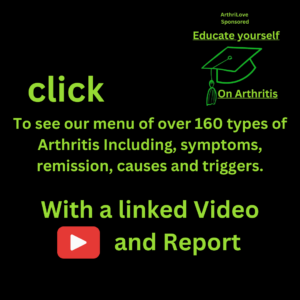Chronic Pain and Arthritis
If you’ve ever wondered what it’s like to host an endless party where the uninvited guests just won’t leave, welcome to the world of chronic pain and arthritis. These two often show up together, causing a ruckus in the lives of millions. So, let’s break it down with a mix of humor, science, and a sprinkle of personal touch.
 Percentage Chance of Chronic Pain with Arthritis
Percentage Chance of Chronic Pain with Arthritis
When arthritis knocks on your door, it often brings its annoying friend, chronic pain. Studies show that about 70-80% of people with arthritis will experience chronic pain at some point. Arthritis is like that one relative who insists on bringing their annoying pet everywhere – persistent and hard to ignore .
Percentage Chance of Chronic Pain without Arthritis
Now, if you’re lucky enough not to have arthritis, your chance of chronic pain drops significantly, but it doesn’t disappear entirely. About 10-15% of people without arthritis suffer from chronic pain. It’s like living in a generally peaceful neighborhood, but there’s always that one house where the dog barks all night .
Comparing Risks: With and Without Arthritis
Comparing the two, living with arthritis dramatically increases the likelihood of chronic pain. Arthritis is the noisy neighbor that makes every little ache and pain louder and more frequent. Without arthritis, chronic pain is more of an occasional inconvenience, rather than a constant companion.
What Is Involved with Chronic Pain?
Chronic pain is not just about having a bad back or a sore knee. It’s a complex beast that can affect every part of your life. It involves persistent pain signals that keep firing in the nervous system for weeks, months, or even years. It’s like having a car alarm that goes off every time a leaf falls on the windshield – relentless and exhausting.
Chronic pain can stem from an initial injury or an ongoing illness, but sometimes there’s no clear cause. It can lead to sleep disturbances, decreased appetite, and fatigue. Emotionally, it can cause anxiety, depression, and a sense of helplessness. In short, it’s a whole-body experience that’s hard to shake off.
Life Expectancy and Comorbidity: Chronic Pain and Arthritis
Does chronic pain shorten life expectancy? Directly, maybe not. Indirectly, the answer leans more towards yes. Chronic pain, especially when paired with arthritis, can lead to a sedentary lifestyle, which invites a host of other health issues like obesity, heart disease, and diabetes. It’s like inviting one annoying guest who then brings along a bunch of equally annoying friends .
Does Chronic Pain Increase with Age?
Yes, chronic pain does increase with age, and it’s not just because we get more whiny as we grow older. As the body ages, wear and tear on the joints and tissues naturally occur, leading to conditions like arthritis, which in turn can cause chronic pain. Think of it as an old car that starts to rattle and squeak – it’s just part of getting older .
Causes, Triggers, and Symptoms of Chronic Pain
Chronic pain can have many causes, from injuries and surgeries to illnesses like arthritis. Triggers can include physical overexertion, stress, and even changes in the weather. Symptoms are varied but often include persistent pain, fatigue, sleep disturbances, and mood changes.
Autoimmune diseases, where the body’s immune system attacks its own tissues, are significant contributors to chronic pain. Inflammatory issues, like those seen in rheumatoid arthritis, can cause widespread pain and damage .
Common Onset Years
Chronic pain and arthritis typically start to make their unwelcome appearances in middle age, around the 40s and 50s. However, they can also affect younger people, particularly those with autoimmune conditions. Life expectancy isn’t necessarily shortened by chronic pain itself, but the associated complications can make life more challenging .
Comorbidities and Interconnected Diseases
Chronic pain and arthritis often come with a package deal of comorbidities. These can include cardiovascular disease, depression, anxiety, diabetes, and obesity. Each of these conditions can exacerbate the others, creating a vicious cycle of declining health. It’s like a chain reaction where one domino falling sets off a whole cascade of problems .
Improving Quality of Life with a Proactive Approach
Despite the challenges, there’s good news: a proactive approach can significantly improve quality of life. Regular exercise, a healthy diet, stress management, and supportive therapies can all help. It’s about taking charge and not letting chronic pain and arthritis dictate your life .
Interconnected Issues and Their Likelihood
Interconnected issues are more likely among seniors due to the natural aging process and the cumulative effect of long-term chronic pain and arthritis. These issues can start to occur as early as middle age but are more pronounced in the senior years .
Triggers and Causes of Interconnected Issues
The primary triggers for these interconnected issues are inflammation and immobility. Inflammation from arthritis can lead to other inflammatory conditions, while immobility due to chronic pain can cause muscle atrophy, weight gain, and cardiovascular issues. Staying active is crucial to breaking this cycle .
Who Is Most Affected?
Women are more likely to be affected by both chronic pain and arthritis, particularly post-menopausal women. Hormonal changes, particularly the decrease in estrogen, play a significant role. Men, while less commonly affected, are not immune, especially as they age .
Onset in Senior Years
The onset of chronic pain and arthritis is most common in the senior years, typically after age 50. This is when the cumulative effects of aging, wear and tear, and possible autoimmune issues start to manifest more prominently .
Life Expectancy and Quality
While life expectancy might not be drastically shortened, the quality of life can be significantly affected by chronic pain and arthritis. The constant pain, coupled with the associated comorbidities, can lead to a decline in physical and mental health .
Likelihood of Remission and Complications
Remission for chronic pain and arthritis is rare, but not impossible. Management is key, and the main complications include reduced mobility, cardiovascular issues, depression, and anxiety. Early diagnosis and proactive management are crucial in mitigating these complications .
Chronic Interrelated Diseases
Commonly related diseases include cardiovascular disease, diabetes, depression, anxiety, and chronic kidney disease. The inflammation from arthritis can increase the risk of these conditions, while the immobility from chronic pain can exacerbate them .
Conclusion
Living with chronic pain and arthritis can feel like a never-ending battle, but understanding the interconnectedness of these conditions can help in managing them effectively. By staying informed, proactive, and maintaining a healthy lifestyle, you can significantly improve your quality of life and mitigate the risks associated with these conditions. It’s a challenging journey, but with the right approach, you can navigate it successfully.
- Arthritis and Chronic Pain
- Understanding Chronic Pain in Arthritis
- Chronic Pain Statistics
- What is Chronic Pain?
- Chronic Pain Overview
- Chronic Pain and Life Expectancy
- Arthritis and Quality of Life
- Age and Chronic Pain
- Autoimmune Diseases and Chronic Pain
- Inflammatory Pain
- Onset of Chronic Pain
- Middle Age and Chronic Pain
- Comorbidities in Chronic Pain
- Interconnected Health Issues
- Improving Quality of Life with Chronic Pain
- Gender Differences in Chronic Pain
- Exercise and Chronic Pain
- Chronic Pain and Mental Health
- Chronic Pain and Diabetes
- Chronic Pain and Obesity
- The Role of Physical Therapy
- The Psychological Impact
- Sleep and Chronic Pain
- Diet and Chronic Pain
- Chronic Pain and Cardiovascular Disease
- Alternative Therapies
- Chronic Pain in the Workplace
- Chronic Pain and Immobility
- Chronic Pain and Substance Abuse
- Chronic Pain and Family Dynamics
By understanding these interconnected risks and comorbidities, you can better navigate the complexities of chronic pain and arthritis. Remember, while the journey is challenging, proactive management and informed decisions can lead to a more fulfilling life.
